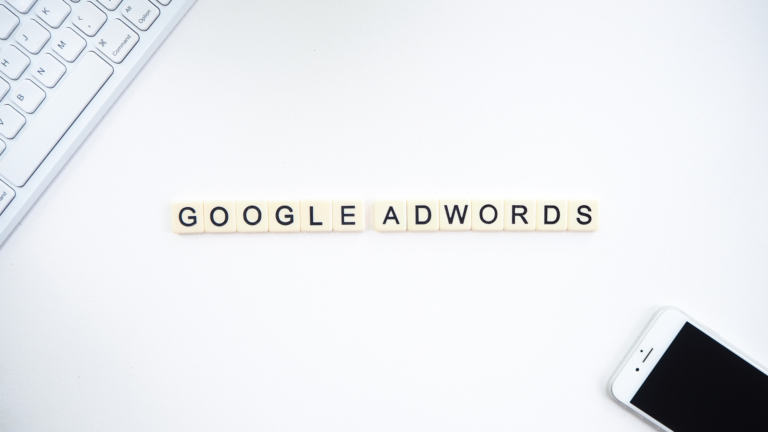The Ultimate Guide to Digital Marketing Tools and Platforms for Small Businesses
Why Small Businesses Absolutely Need Digital Marketing
In today’s digital age, small businesses must have an active online presence. If your business isn’t online, you’re giving your competitors a significant advantage. Gone are the days when people primarily relied on friends for recommendations. Now, most of us search online for products and services, making it crucial for your business to appear in those searches. If you’re not showing up, you’re missing out on potential customers.
While word-of-mouth recommendations are valuable and can drive traffic to your business, they only cover a fraction of your potential audience. To stay competitive, you need to engage with people where they are—and in 2024, that’s online.
Where to Begin? Understanding the Four Major Types of Digital Marketing
Before diving into specific digital marketing strategies, it’s essential to understand the four main types:
- Content Marketing
- Search Engine Optimization (SEO)
- Search Engine Marketing (SEM)
- Social Media Marketing
But before we delve into these areas, let’s talk about the foundation of all your digital marketing efforts: your website.

Your Website: The Core of Your Digital Marketing Strategy
Your website is the central hub for all your digital marketing activities. It’s vital to ensure your website is ready before allocating resources to any marketing strategy. Remember, your website is not a one-time project. Regardless of how much you’ve invested in it, it must evolve continuously to match the pace of your business growth.
Think of your website as your physical store in the online world. Just as you would update your store’s windows, upgrade your equipment, and refresh your displays to attract customers, you need to do the same with your website. Continuously seek ways to enhance your online presence to keep customers engaged and happy.
Your website is an ongoing project. Investing in its improvement is not a one-off task, even if you’ve spent thousands of dollars on it. It’s a continuous effort because the digital landscape, customer preferences, and your competition are always changing. New businesses are entering the market, and customer loyalty is not what it used to be. To retain existing customers and attract new ones, you need to adapt constantly.
Ready to Dive Into Digital Marketing? Here’s What You Need
With your website as your digital storefront, it’s time to explore the resources and tools you need to master different types of digital marketing:
- Content Marketing Tools: These help you create, distribute, and analyse the performance of your content.
- SEO Tools: Essential for optimising your website to rank higher in search engine results.
- SEM Tools: Useful for managing and optimising your paid search advertising campaigns.
- Social Media Marketing Tools: These assist in managing your social media presence, scheduling posts, and analysing engagement metrics.
1. content marketing
Content marketing is a strategy for attracting customers by creating informative and engaging online content, like blog posts, guides, and videos. Unlike traditional advertising, it doesn’t bombard viewers with sales messages. Instead, it focuses on providing valuable solutions to their problems and answering their questions. This builds trust and positions you as an expert in your field.
So, why is it important? Because it goes beyond just creating content. It’s a strategic approach to attract, engage, and delight your target audience with relevant information. Here’s what you get out of it:
- More visitors: By creating content that people are searching for, you’ll rank higher in search results, drive more traffic to your website, and boost brand awareness.
- More customers: By providing valuable and engaging content, you’ll convert more website visitors into leads and paying customers.
- Stronger relationships: Content that resonates with your audience and encourages interaction builds loyalty, leading to repeat business and positive word-of-mouth recommendations.
- Increased authority: By creating high-quality content that showcases your expertise and insights, you’ll establish yourself as a trusted authority in your field.
Content marketing offers a toolbox of formats to reach your audience. There are many ways to create informative and engaging content, each with its strengths:
- Blog posts: Share your knowledge, build website traffic, and rank higher in search results.
- Social media posts: Connect with your audience, raise brand awareness, and spark conversations on platforms they already use.
- Ebooks: Offer in-depth information on a specific topic, capture leads with valuable downloads, and establish your expertise.
- Email marketing: Deliver content directly to inboxes for a personal touch, nurture leads, and build relationships.
- Videos: Capture attention, convey messages in a dynamic way, and evoke emotions through engaging visuals.
- Podcasts: Reach listeners who prefer audio content, discuss topics in-depth, and build a loyal following.
- Memes: Showcase brand personality with humor, connect with your audience on a relatable level, and leverage trends for timely content.
- Case studies: Share real customer success stories to build trust, highlight the value you offer, and persuade potential customers.
- User-generated content: Encourage customers to create content about your brand, leverage word-of-mouth recommendations, and boost engagement.
2. search engine optimisation (SEO)
Search Engine Optimization (SEO) is the key to unlocking the power of organic website traffic. It’s the ongoing process of optimising your website and content to rank higher in search engine results pages (SERPs) for relevant keywords. Unlike paid advertising that offers temporary boosts, SEO delivers long-term benefits by attracting a steady stream of qualified visitors who are actively searching for what you offer.
Why is SEO Crucial for Your Business? SEO goes beyond vanity metrics like website visits. A well-optimised website enjoys a multitude of advantages:
- Enhanced Visibility: Dominate search results for terms potential customers use, skyrocketing brand awareness and attracting organic traffic without relying on paid ads.
- Laser-Targeted Audience: SEO helps you reach people actively searching for solutions you provide, resulting in higher conversion rates as you connect with a highly relevant audience.
- Credibility and Trust: High search rankings signal to search engines and users that your website is a valuable resource and authority in your field. This builds trust and positions you as a go-to expert.
- Cost-Effectiveness: SEO offers a sustainable growth strategy. Unlike paid advertising that requires ongoing investment, SEO delivers long-term results without relying on constant ad spend.
Unveiling the SEO Toolkit: Now that you understand the power of SEO, let’s explore some key strategies to get you started:
- Keyword Research: This is the foundation of any SEO strategy. Identify the search terms people use to find products or services like yours. Tools like Google Keyword Planner can help you uncover high-volume, relevant keywords with lower competition.
- On-Page Optimisation: Craft compelling content that is informative, engaging, and optimized for your target keywords. This includes optimizing page titles, meta descriptions, header tags, image alt text, and the overall content itself to naturally incorporate these keywords.
- Technical SEO: Ensure your website is technically sound for search engines to crawl and index effectively. This involves optimising website speed, mobile-friendliness, and having a clean code structure. Tools like Google Search Console can help identify technical SEO issues that need to be addressed.
- Link Building: Earning high-quality backlinks from reputable websites is a crucial SEO tactic. Backlinks act like votes of confidence for your website, signaling to search engines that your content is valuable and trustworthy. There are many ways to build backlinks, such as guest blogging on relevant websites, creating link-worthy content that others want to cite, and directory submissions.
- Content Creation: Fresh, valuable, and informative content is king in the SEO world. Regularly publish high-quality content that addresses your target audience’s needs and keeps them engaged. This could include blog posts, infographics, videos, case studies, or whitepapers.
- Local SEO: If you have a brick-and-mortar business or serve a local clientele, local SEO optimization is essential. Optimise your website for local search terms, claim and manage your Google My Business listing, and build local citations to improve your visibility in local search results.
By implementing these strategies consistently, you can take control of your website’s search engine ranking and attract a steady stream of qualified leads who are ready to convert. Remember, SEO is a marathon, not a sprint. Be patient, focus on creating high-quality content, and building a strong online presence, and you’ll see your website climb the search engine ranks over time.
3. Search engine marketing (SEM)
PPC, or Pay-Per-Click, advertising is a dynamic marketing strategy within the vast world of online advertising. It functions on a simple yet powerful premise: you only incur costs when someone clicks on your ad, effectively transforming your budget into targeted website visits.
Imagine you’re a retailer specializing in handcrafted guitars. PPC allows you to bypass traditional, scattered advertising methods and instead place highly focused ads online. Here’s how PPC brings laser precision to your marketing efforts:
- Platform Powerhouse: A multitude of platforms exist to launch your PPC campaigns. Popular choices include industry giants like Google Ads and Microsoft Advertising, alongside social media advertising platforms like Facebook Ads and Instagram Ads. Each platform offers unique targeting capabilities and reaches distinct audiences, allowing you to tailor your strategy to best suit your business goals.
- Targeting Tailored to Perfection: PPC advertising empowers you to define who sees your ads with pinpoint accuracy. You can target users based on demographics like age, location, and income, or delve deeper into psychographics like interests and online behavior. For example, you can target your guitar ads towards people who have recently searched for guitar tuners or music lessons, significantly increasing the relevance of your message and the likelihood of conversions (someone clicking through your ad and making a purchase).
- Bidding Strategies for Budget Optimization: PPC operates on a bidding system. You essentially place bids on keywords or ad placements. When a user searches for a relevant term, your ad enters an auction with other advertisers targeting those keywords. The highest bidder typically gets the most prominent ad position. However, PPC platforms also factor in the quality and relevance of your ad content alongside your bid. This ensures that high-quality, targeted ads can compete effectively even with slightly lower bids.
- Measurable Metrics for Campaign Mastery: Unlike traditional advertising methods that can be a black box, PPC offers unparalleled transparency. You have access to a wealth of data and metrics, allowing you to precisely track the performance of your campaigns. Monitor clicks, conversions (like website sales or contact form submissions), and Return On Investment (ROI) to see what’s working and what needs tweaking. This real-time data empowers you to optimize your campaigns for maximum impact and ensure you’re getting the most out of your advertising budget.
In essence, PPC advertising cuts through the noise of online marketing by allowing you to place targeted ads in front of people actively searching for your products or services. You only pay when someone clicks through, making it a results-oriented strategy that can generate a steady stream of qualified leads for your business.
4. Social media marketing
In the fast-paced digital era, social media has become an indispensable tool for small and medium-sized enterprises (SMEs) looking to compete and thrive. If your business isn’t leveraging social media, you’re missing out on a massive opportunity to connect with potential customers, build brand awareness, and drive sales. Here’s why social media marketing is essential for SMEs:
Broaden Your Reach: Social media platforms like Facebook, Instagram, Twitter, LinkedIn, and TikTok boast billions of active users. These platforms offer unparalleled access to a vast audience, allowing you to reach potential customers who may not find you through traditional marketing channels.
Cost-Effective Marketing: Compared to traditional advertising methods, social media marketing is highly cost-effective. Many social media tools and features are free, and paid advertising options are often more affordable than other digital marketing channels. This makes it an excellent choice for SMEs with limited marketing budgets.
Enhanced Customer Engagement: Social media enables direct interaction with your customers. You can respond to inquiries, address concerns, and gather feedback in real-time, fostering a sense of community and building stronger relationships with your audience.
Brand Awareness and Loyalty: Regularly posting valuable content and engaging with your followers helps build brand recognition and loyalty. By consistently showing up in your customers’ feeds, you stay top-of-mind, making it more likely they will choose your products or services when they need them.
Data-Driven Insights: Social media platforms provide powerful analytics tools that offer insights into your audience’s preferences and behaviors. This data allows you to refine your marketing strategies, tailor your content, and target your ads more effectively.
Increased Website Traffic and Sales: Effective social media marketing can drive significant traffic to your website. By sharing engaging content and promotions, you can encourage followers to visit your site, leading to higher conversion rates and increased sales.
Getting Started with Social Media Marketing
Now that you understand the importance of social media marketing, here are some steps to help you get started:
Choose the Right Platforms: Identify which social media platforms are most popular with your target audience. Focus on building a strong presence on these platforms rather than trying to be everywhere at once.
Create a Content Strategy: Develop a content plan that aligns with your business goals and resonates with your audience. This includes a mix of promotional posts, informative content, and engaging visuals.
Engage with Your Audience: Regularly interact with your followers by responding to comments, participating in conversations, and encouraging user-generated content. Engagement helps build community and trust.
Utilize Paid Advertising: Consider using paid social media ads to boost your reach and target specific demographics. Platforms like Facebook and Instagram offer sophisticated targeting options to help you reach your ideal customers.
Analyze and Adjust: Use the analytics tools provided by social media platforms to monitor the performance of your posts and ads. Regularly review these insights to understand what works and what doesn’t, and adjust your strategy accordingly.
Embrace Digital Marketing for Sustainable Growth
In today’s digital age, having an active online presence is essential for small businesses to remain competitive. The shift from traditional word-of-mouth recommendations to online searches underscores the necessity for your business to be visible where potential customers are looking for products and services. Without a strong digital footprint, you risk losing out to competitors who are more adept at engaging with their audience online.
Digital marketing offers a comprehensive toolkit to help you reach and engage with a broader audience. By understanding and implementing strategies such as content marketing, SEO, SEM, and social media marketing, you can drive traffic to your website, convert visitors into customers, and build lasting relationships with your audience.
Your website is the cornerstone of your digital marketing efforts. It’s crucial to continually invest in and update your site to reflect the evolving nature of your business and the digital landscape. A well-maintained and user-friendly website enhances your credibility and serves as a central hub for all your marketing activities.
Embracing digital marketing enables you to meet your customers where they are—online. It allows you to leverage cost-effective marketing strategies, gain valuable insights from data analytics, and foster customer loyalty through consistent engagement. By adopting a dynamic and integrated digital marketing approach, you position your business for sustainable growth and long-term success.
Ready to take your small business to the next level? Start by implementing the digital marketing strategies outlined in this guide, and watch as your online presence transforms into a powerful driver of business success.







